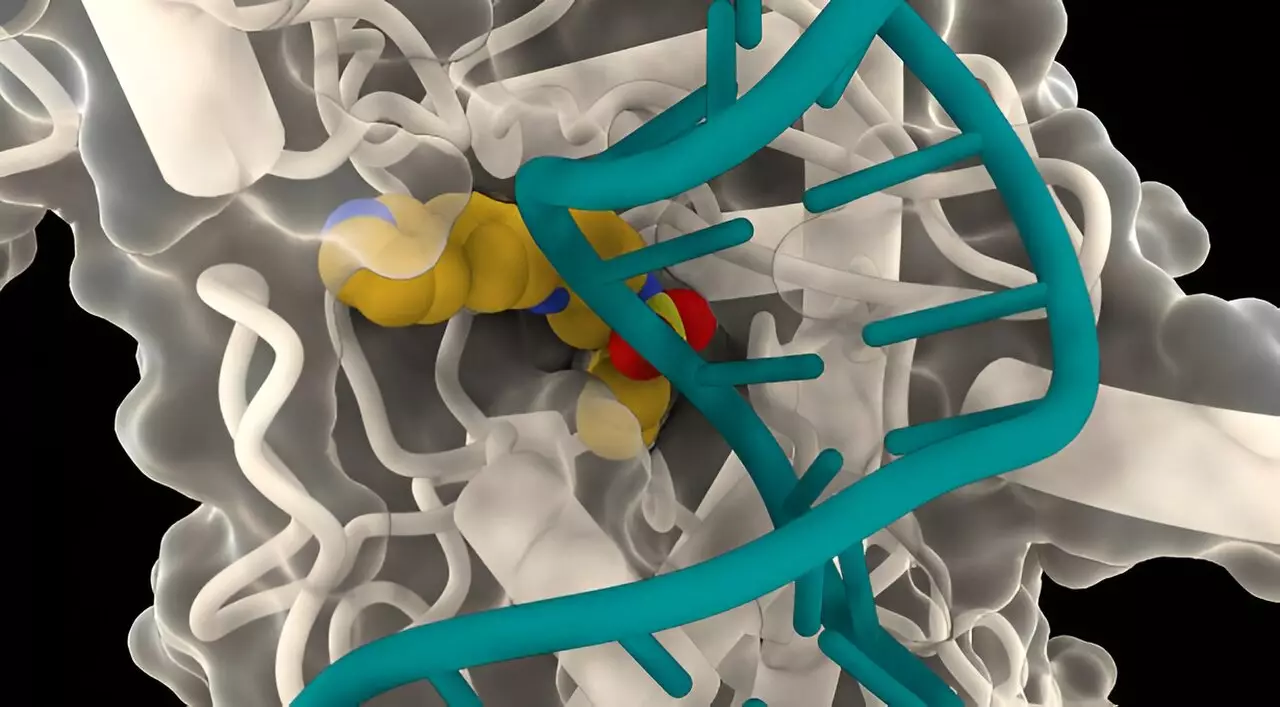In a groundbreaking collaboration between the University of Leiden in the Netherlands and the John Innes Centre in the UK, researchers have embarked on an innovative project to repurpose existing drugs for their potential as antibiotics. This project has unveiled a highly promising candidate, known as LEI-800, which possesses a potent and unique way of killing drug-resistant bacteria.
The research team screened a chemical library of 352 small molecules, originally used in human therapies for cancer, to test their antimicrobial activity. Out of these compounds, 12 were identified to inhibit bacterial growth. The most potent compound, LEI-800, belongs to a class of compounds called isoquinoline sulfinamides and was further optimized by researchers at the University of Leiden.
Researchers discovered that LEI-800 exhibited antimicrobial activity against gram-negative bacteria such as Escherichia coli and Klebsiella pneumoniae, both notorious for causing hospital-acquired infections. Upon further investigation, it was found that all naturally occurring resistant strains contained mutations in genes encoding the bacterial enzyme DNA gyrase, which is the target of LEI-800. Gyrase is essential for bacterial growth as it functions to break and rejoin DNA to remove knots and entanglements.
Unprecedented Inhibition
Using cryo-electron microscopy, the John Innes team confirmed that LEI-800 binds to E. coli gyrase and inhibits its activity by preventing the enzyme from cutting DNA. This novel mechanism of action makes LEI-800 a potential game-changer in the fight against drug-resistant bacteria, particularly gram-negative strains that are becoming increasingly problematic in clinical settings.
The urgent need for new antibiotics to combat drug-resistant bacteria is a global health emergency. The development of novel molecules like LEI-800 offers a glimmer of hope in addressing this crisis. The study sets the stage for the creation of a new class of antibiotics specifically targeting gram-negative bacteria that have evolved resistance to existing drugs.
Dr. Dmitry Ghilarov from the John Innes Centre expresses excitement over the discovery of a new antibiotic through drug repurposing. This approach not only saves costs associated with synthesizing new compounds but also presents an opportunity to discover alternative treatments for antibiotic-resistant infections. The unique binding pocket of LEI-800 suggests that it could be used in conjunction with existing antibiotics for a more effective treatment approach.
Drug Repurposing in Medicine
The concept of drug repurposing is not new, with well-known examples such as aspirin and sildenafil showcasing the potential of existing drugs in alternative therapies. Dr. Ghilarov emphasizes the complexity of biology, highlighting the ability of small molecules to target multiple proteins and pathways within cells. Leveraging drug repurposing in antibiotic development opens up new possibilities for combating drug-resistant infections.
Moving forward, the research team plans to optimize LEI-800 further and progress towards clinical trials and commercialization. This milestone in antibiotic development underscores the importance of innovative approaches and collaborative efforts in addressing the growing threat of antimicrobial resistance. The search for new antibiotics is a continuous challenge, but through projects like this one, we can make significant strides towards a healthier and more resilient future.


Leave a Reply